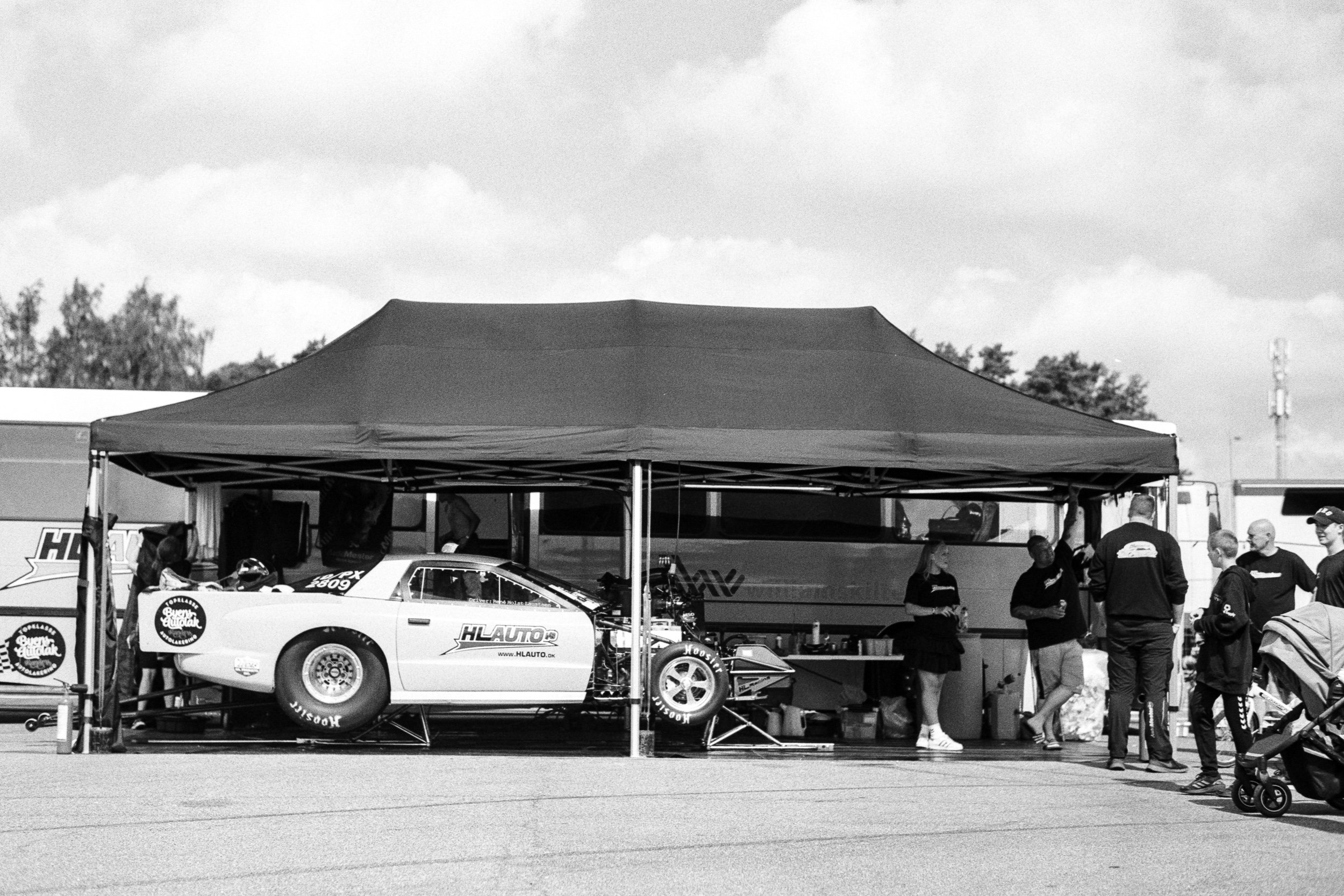Meguiar’s Drag Festival 2024
Last year, I had my first contact with drag racing. I still know very little about this discipline, but it’s very clear why I wanted to come back to Meguiar’s Drag Festival. Not because of the action on the drag strip. The way in which those machines disappear into the distance after starting is amazing, and the sound and smoke add even more to the experience. But it's not the most interesting part of the event for me. What is the most fascinating is what is happening behind the scenes.
The contrast between professional teams with Top Fuel dragsters and amateurs with rusty vans is unique. The first ones can refurbish the engine in a split second. The others can efficiently work on the car with one hand while enjoying beverages hold in the other.
The second reason why I came back to Mantorp Park was the photographic challenge I wanted to take: to photograph 11000 HP dragsters with a fully mechanical camera from the 1960s. How hard can it be?
It’s Sunday morning, and the place is just waking up to the sound of the roaring V8s. After passing through the gates of the track, everyone first goes past the booths of the smaller teams. In some of them, the atmosphere is very lively: their cars are just leaving the pits and heading to the start line. Teams with the most powerful machinery are located closer to the start area. There, the atmosphere is much easier, but saying that it’s quiet before the storm is very appropriate.
Those participating in the Top Fuel category have only one run scheduled for today. No wonder that now it’s quiet around Susanne Calin’s dragster and truck. But it wasn’t the case the day before. Saturday was a day of mixed fillings. One of her runs was the quickest of the whole event, but during the other, the engine blew, and a new one was needed. Unfortunately, one best run is not enough here. The final score comprises the results of all the runs.
In my story from the last year’s event, I was describing my admiration for all the mechanics capable of refurbishing the engine head almost in a split second. Rebuilding and tunning of the clutch is also their bread and butter. But building the whole engine from a scratch is a totally different thing.
But Top Fuel is only one of uncountable classes competing in the Meguiar’s Drag Festival. Other machines and teams also have much to offer. Some cars do better burnouts, and some do spectacular wheelies. I had a limited number of frames on my film, so I couldn’t shoot every car’s start. I tried to recall my last years’ experience and focus on the cars I believed will do the best show.
It’s interesting to observe how participants are getting to the start. Many cars can do it on their own, but many require some help. Modern Volvos do their jobs well, but their look doesn’t align with the aesthetics of the place. American classic cars look much better, and custom-made carts bring it to the next level. But why not build a V8-powered tractor? Someone did it.
Standing next to the starting dragster is an extremely thrilling experience, but it’s good to be reserved and cautious and keep a minimal distance. Don’t stand behind the car during the burnout and not next to it during the start. The pressure of exhaust gases is so high that cap can be blown off your head in the blink of an eye. Gasses, drops of unburned fuel, and rubber dust are not what one wants to have in the eyes and on the front element of the lens.
Now, everyone can imagine that photographing those monsters is not the easiest job. But if that wasn’t tough enough, using a slow, fully mechanical camera from the 1960s was adding to the challenge and adding much more than I expected. It’s possible to deal without the help of modern technologies, intelligent autofocus or continuous shooting, but some special techniques must be applied. Just like in the good old days, the most important thing is to predict what may happen before the camera. Which car can potentially do the most spectacular burnout, which will raise its front wheels during the start, and which may bend its whole chassis thanks to the enormous torque of those amazing engines? It’s not only important to guess what will happen, but also exactly where, as following the subject with manual focus is not a reliable technique. Fortunately, the bright viewfinder and robust build of my Minolta SR-T 101 helped me go through the day and deliver some pictures.
The highlight of the day was the last run of the Top Fuel dragsters. But before it, a small presentation of all 6 participants was prepared. The machines were exposed on the drag strip for spectators and photographers to admire and document. This was an opportunity to experience one of the other characteristic parts of this sport: the stickiness of the rubberized tarmac. Stand stationary for a few seconds, and you may start to worry that you will stand there forever or will have to abandon your shoes there. The amount of rubber left there during all of those burnouts and starts is amazing.
My visit to Meguiar’s Drag Festival was more rewarding than I expected. Not only did I start to understand this discipline better, but I also underwent this photographic challenge. As I was heading to the exit, I had my last experience of the day. Charismatic vintage buses, which are utilized as workshops and car carriers, were also leaving the place. I have a huge admiration for them and the fact that they are still in use. Highly modified but still dully serving others. They deserve a special story on my page one day.



















